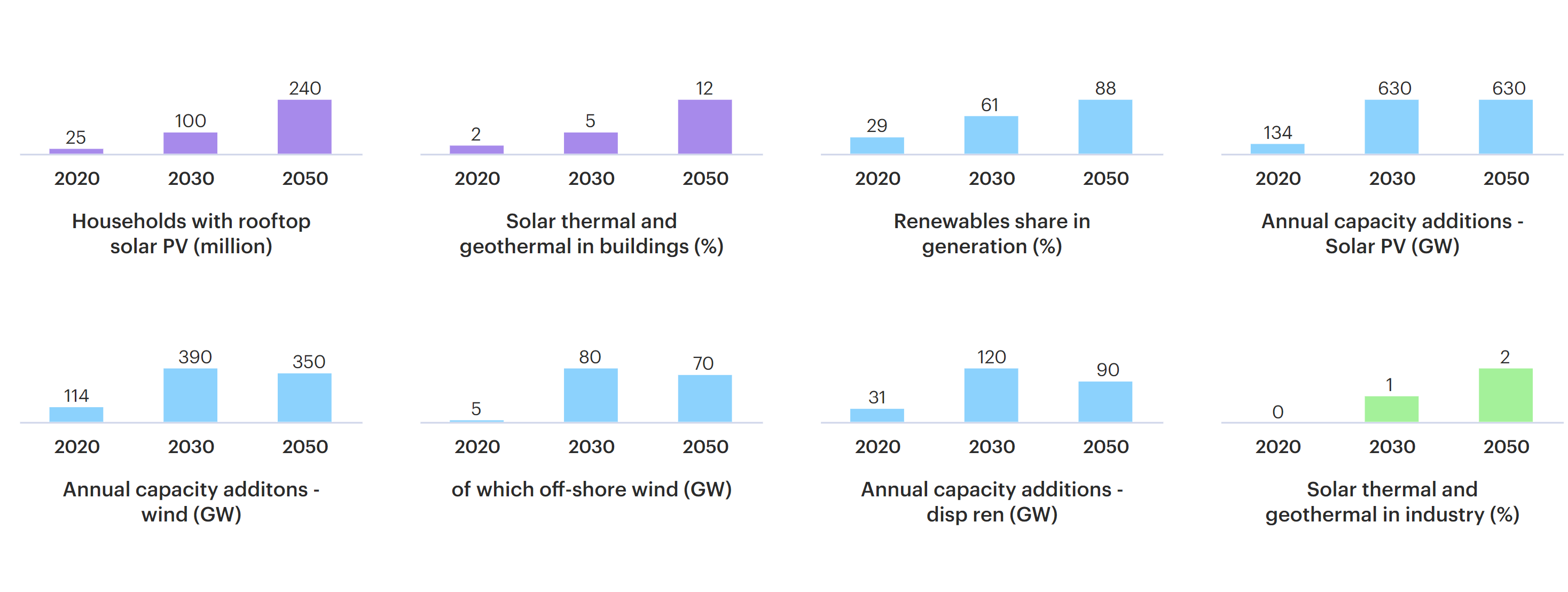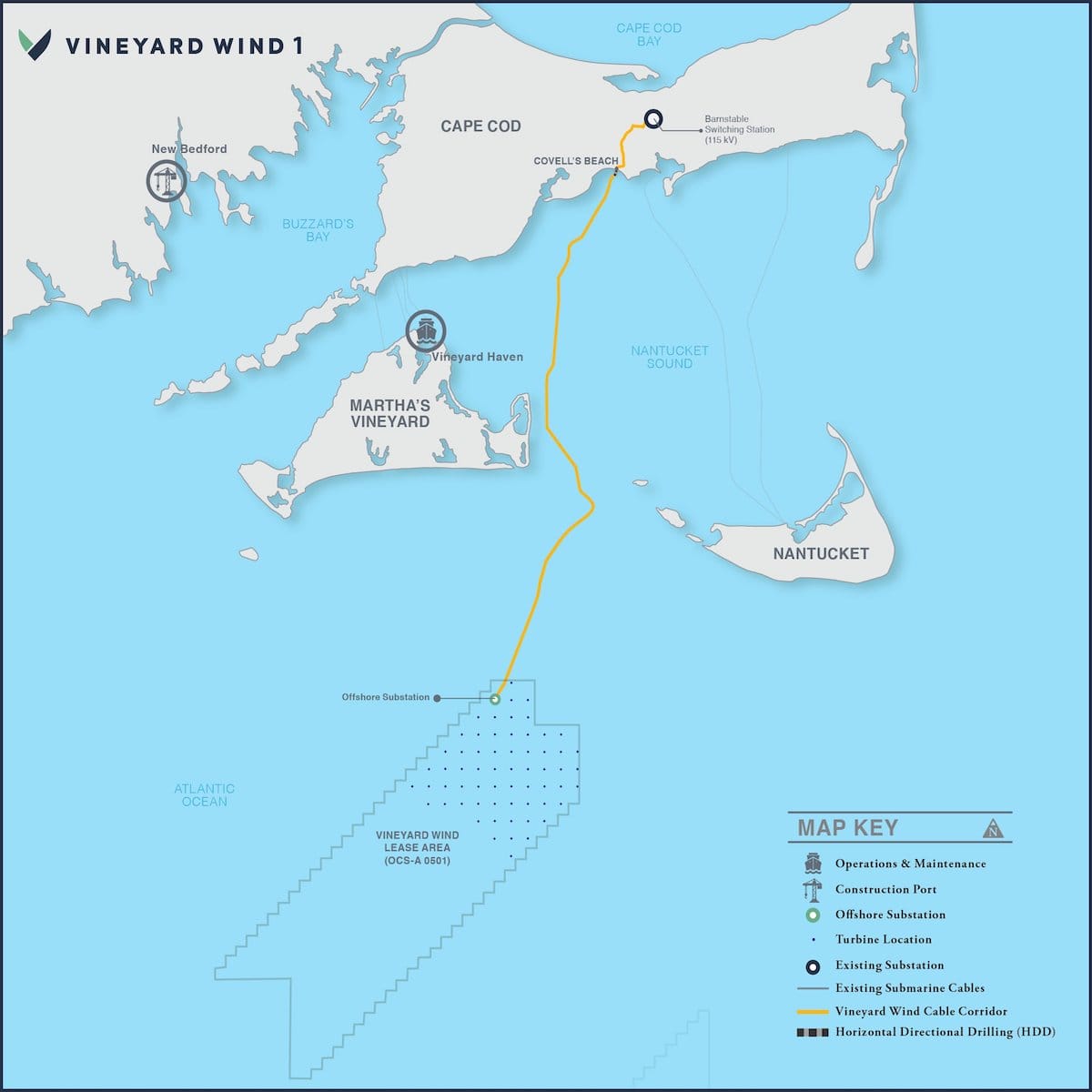Today from the Clean Power Hour, we discuss the first commercial offshore wind plant for the United States, a whole bunch of stuff on space, the International Energy Agency suddenly coming out HUGE for wind+solar, and more! This excessive commentary is brought to you by Tim Montague and yours truly – the CommercialSolarGuy – John Fitzgerald Weaver.
First, here’s the podcast – now on to the news:
 IEA says 630 GW/solar/year needs occur by 2030
IEA says 630 GW/solar/year needs occur by 2030
Two things here – 1. The IEA has flipped it’s script and: 2. 630 GW/year dude! That’s a lotta volume.
Renewable energy technologies like solar and wind are the key to reducing emissions in the electricity sector, which is today the single largest source of CO2 emissions. In our pathway to net zero, almost 90% of global electricity generation in 2050 comes from renewable sources, with solar PV and wind together accounting for nearly 70%.
Deciphering the mysterious apology of the mysterious group that shut down a major U.S. pipeline.
There are still thousands of gas stations that don’t have gas across the southeast USA. The question then pivots to who/why/what does this say about nation state vulnerability?
Last week the FBI confirmed the involvement of DarkSide, a little-known gang of cyber criminals based somewhere in Eastern Europe, possibly Russia. It purports to be a cyber-punk version of Robin Hood, collecting ransom from rich corporations and giving (some) to charity. It reportedly got $5 million in digital currency from Colonial and has now dropped out of sight online.
Covid in a coke can
…This is an incredibly interesting piece of data. It’s hard to believe that something so small can do so much damage.
Total volume/mass of all SARS-CoV-2 would almost certainly fit into a soft drink container, and definitely into a milk container. https://t.co/hTVr7hqrbr
— Dr Karl (@DoctorKarl) May 16, 2021
Vineyard Wind Receives Record of Decision for First in the Nation Commercial Scale Offshore Wind Project
This enormous offshore wind project is only the beginning of a large industry that will employ maybe a million people on the East Coast of the USA, while generating a massive chunk of electricity. And to add a little icing to the cake, California on almost the same day, announced an investment of $20 million to begin developing the offshore industry on the West Coast.
The project design includes the world’s most powerful wind turbine, the GE Haliade-X, with a capacity of 13 megawatts (MW). The larger turbine capacity has allowed the project to reduce the total number of turbines from 108 to 62 while still delivering a total capacity of 800 MW to Massachusetts ratepayers. The turbine layout, which features consistent spacing of one nautical mile between turbines, was endorsed by the United States Coast Guard for transit, fishing and navigational safety.

Artists rendering of New Bedford wind hardware port
SPACE STUFF!!
- SpaceX has been awarded a $50 million contract from NASA for an “on-orbit large scale cryogenic propellant management and transfer demonstration.” Contract is estimated to be completed by the end of 2022.
- SpaceX’s Starship Prototype 15 lands for the first time. Congratulations!
- China puts it’s first rover on Mars
- Discovery television launching Who Wants to be an Astronaut contest to win a ride to the International Space Station.
Iberdrola seeks innovative solutions for agrivoltaics
Food and electricity generation are both energy creation systems. Aligning them is important. Below twitter thread is a collection of agrivoltaic examples I’ve been collecting.
Perseo, an international start-up program competition aimed at identifying competitive and innovative solutions to combine solar photovoltaic plants with activities related to agriculture, horticulture, livestock, fish-farming or bee-keeping.
Perm Thread: Various forms of #agrovoltaics – #Solar+???https://t.co/EdzT6Oy1y5
— Commercial Solar Guy (@SolarInMASS) October 2, 2020
Store Wind and Solar Power as Heat in Sand
Inside the sand we build our heat transfer system that enables effective energy transportation to and from the storage. Proper insulation between the storage and environment ensures long storing period, up to months, with minimal heat losses. The size of our storages varies from tens to thousands of cubic meters. It is possible to locate the storage underground, reserving minimal space from the often highly valued square meters in construction sites.
Aluminum-Ion Battery Claims It Charges 60 Times Faster Than Lithium-Ion
GMG plans to bring graphene aluminum-ion coin cells to market late this year or early next year, with automotive pouch cells planned to roll out in early 2024. Stanford’s natural graphite aluminum-ion technology delivers 68.7 Watt-hours per kilogram and 41.2 Watts per kilogram, while its graphite-foam bumps up to 3000W/kg. The GMG-UQ battery heaves that forward to between 150 and 160Wh/kg and 7000W/kg.
Project of the Week
Constructed by Tim’s company – Continental Energy Solutions – and it’s in the shadow of the Braidwood Nuclear Power Plant. If you ask Tim nicely, he’ll share a video of it. Google Maps location. Facility owned by developer Summit Ridge Energy.
- 2.0 MWac/2.49 MWdc
- Talesun 400 watt solar modules
- Solar Flexrack SAT
- CSP 125 kW inverters
Green aluminium already cost competitive and huge opportunity for Australia
The current average cost of producing aluminium using fossil fuels currently sits at US$1,680 per ton (A$2,156), while the combination of renewable energy sources and new “inert anode” technologies can already see production costs cut to just US$1,590 per ton (A$2,040), and avoiding virtually all emissions from the aluminium smelting process, BloombergNEF estimates.
Starlink can serve 500,000 users easily, several million “more of a challenge”
I’ve pre-ordered Starlink, but I don’t ‘need’ it. I’ve got cheap cable at home and cell phone works most everywhere usually. However, I want to support the mission. Though, if it turns out it’d be better for the system to give up my account, so be it.
‘To date, over half a million people have placed an order or put down a deposit for Starlink,’ SpaceX operations engineer Siva Bharadvaj said during the launch webcast of its 26th Starlink mission.
And now of course, the podcast:





